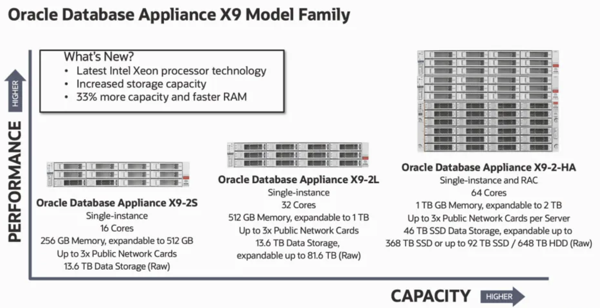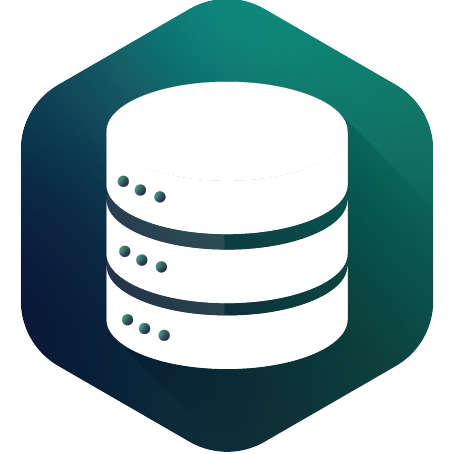Introduction
The Oracle Database Appliance is a pre-configured and optimized system for running Oracle databases. It has been a popular choice among customers since its introduction in 2011 and has undergone seven updates. The latest models in the X9 family include the X9-2S, X9-2L, and X9-2-HA, offering low hardware prices and flexible software licensing options while delivering performance with the engineering that Oracle has invested into the technology stack. The X9-2S and X9-2L are designed for single-instance databases, while the X9-2-HA is optimized for clustered databases (RAC) with high availability and scalability. The Oracle Database Appliance is a cost-effective solution for customers who want to avoid the complexity and cost of custom database solutions, as it provides an optimized system with Oracle best practices and single vendor support. The ODA is an engineered system that includes hardware, software, storage, and networking all organized in an appliance developed by Oracle. If your’e familiar with Oracle Technologies, then the best way to look at the ODA HA Model is by thinking of it as a two node Oracle Linux RAC cluster in a single box, with shared storage and networking all included. With ODA X9-2, Oracle replaced the M model with the L model with additional capacity and resources.
Latest Hardware Changes
With each release, Oracle has packed features and innovations to their appliance. Here’s the latest ODA factoids for the X9-2 HA and the X9-2S/L models.
- New Intel® Xeon® Silver 4314 processor, 16-core, 2.4GHz processors deliver performance improvements
- PCIe bandwidth increases to PCIe 4.0
- Memory capacities starting from 512 GB for Large and HA models; starting at 256 GB for Small model
- Model S and L: 13.6 TB capacity for Small model; Up to 81.6 TB NVMe SSD for Large model
- Model HA: Up to 368 TB SSD capacity or up to 648 TB HDD + 92TB SSD
Memory
The L and the HA models of the ODA can support up to 1TB of memory per node. On the HA model, you will have 2TB of memory for RAC databases.

NVMe
The S and L models support NVM Express (NVMe) flash storage for ultra fast database performance. These models ship with 13.6 TB of raw NVMe storage. The L model can be configured up to 81.6 TB of raw NVMe storage.
Virtualization
The virtualiation stack on the ODAs have come a long way. I tell customers that Oracle abandoned OVM and have transitioned to KVM as KVM is a much better virtualization stack. KVM is the virtualization stack that also runs on the Exadata platforms on-premise and in the cloud. The beauty of the KVM technology for the ODA is that customers no longer have to decide on the virtualization stack at the time of imaging the ODAs. Customers can choose later to virtualize on KVM for their guest operating systems. Oracle even supports RAC on KVM running on the ODA.
There are some documented restriction for running virtualization on the ODA. The following restrictions apply when you deploy KVM database system on Oracle Database Appliance:
- You can create only one database for each database system (KVM guest VM).
- The shape of the database system is derived from the shape you select for the database. The CPU cores for the database system is set as defined in the database shape. For example, if a customer selects odb4 as the database shape, in which the database uses 4 cores, then the KVM VM is created with 4 cores.
- odb1s and odb1 shapes are not supported with KVM on the ODA.
- You cannot use Oracle ACFS for storage within the database system. The database running inside the dbsystem uses Oracle ASM storage. The VM is created on Oracle ACFS based storage.
- Only Oracle Database releases 19.12 and 21.3 are supported within the database system. The version is specified in the database system JSON payload, with the attribute version for database.
- You cannot configure CPU Pools or run VM commands within the database system.
- Lastly, with ODA KVM, the Oracle Grid Infrastructure software installed is of the same version as the Oracle Database version you install. The version is specified in the database system JSON payload, with the attribute version for database.
With the ODA 19.15 release, Oracle provided the capability to migrate from OVM to KVM.
Data Preserving Reprovisioning (DPR)
Also with the ODA 19.15 release, the Data Preserving Reprovisioning (DPR) known for node restore capability was introduced. This is by far one of the most requested and powerful features introduced for the ODAs. One of the negative criticisms that ODA gets from their customers is difficulties with patching. With the DRP feature, customers who do not patch often or not at all no longer have to perform multiple patches. Reimaging no longer requires wiping out the data and databases on ther ODA disks. Instead, you can preserve your databases by extracting the ODA setup metadata, reimage the appliance, and then remap the databases to the fresh install. This process is similar to unplugging and plugging back in your ODA configuration.
Unfortunately, as of now, DPR is limited to older versions:
12.1.2.12, 12.2.1.4, 18.3, 18.5, 18.7, and 18.8.
More enhancements and testing are being done with this feature. Oracle’s goal is to provide increased compatibility in future versions. This feature can significantly change how customers patch the ODA … really re-image the ODAs. Already, Oracle has moved out all Oracle homes away from the root disks. The re-imaging of the ODA only wipes the disks dedicated for the OS. All other disks and ASM diskgroups will be stitched back in by re-populating the metadata. This means that customers no longer have to backup and restore the databases.
This feature will allow you to backup the metadata and copy that off to ASM. After re-imaging the latest ODA (without touching the databases) version, you can re-attach the databases to the new imaged ODA nodes. Now we are talking about 2 hours of an outage window versus having to do like 5 or 6 or more upgrades to get the latest version of the ODA.
Applying Out-of-Cycle Database Patches
The out-of-cycle patching capability allows administrators to update their Oracle Database Appliance deployment with the newest Oracle Database Release Update, separate from the Oracle Database Appliance releases. You can manually apply Release Updates (RU) with OPatch. Oracle does, however, strongly recommends that you patch the database software through the Oracle Database Appliance releases. Oracle allows for customers to apply out-of-cycle patches to baremetal and KVM guest VMs.
Some of our customers use this approach to apply databases patches more often than updating the ODA patches. For example, a customer can opt to apply the database patches every quarter but update the ODA software every 6 months. When customers encounter bugs on the database stack and have to upgrade to the next RU or higher, Oracle allows just the database Oracle Home to be patched independently of the ODA and OS stack.
Single Instance Database (SE/EE) High-Availability for ODA
As of Oracle Database 19c, Oracle RAC is no longer supported for Standard Edition. To provide high availability to customers on the ODA, Oracle introduced Standard Edition High Availability (SE HA) on the ODA. This feature, implemented with Oracle Clusterware technology stack, is now extended to the Oracle Enterprise Edition customers. This feature allows for the database and shared resources (VIPs, network and storage) to demonstrate high availability on their ODAs.
ODA now support Enterprise Edition High Availability (EE HA) which is basically RAC One Node for FREE on the HA model with shared storage and server interconnects. This changes the landscape for database customers who only want high availability, but choose to leverage RAC or virtualize for HA benefits. It is supported bare metal and DB Systems (KVM). This feature is free to ODA customers but there is a 10 day failover rule that applies.
Data Sheets
For complete details, please download the S/L and/or HA model data sheets:
For data sheets on Oracle’s earlier models of there ODA, please visit our OracleODA.com website.
